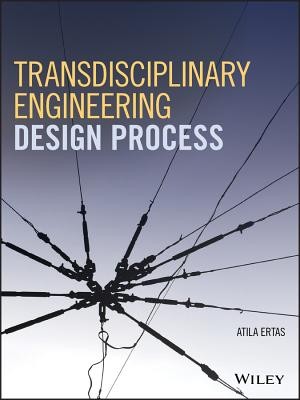
- We will send in 10–14 business days.
- Author: Atila Ertas
- Publisher: Wiley
- ISBN-10: 1119474752
- ISBN-13: 9781119474753
- Format: 19.3 x 23.6 x 3.6 cm, hardcover
- Language: English
- SAVE -10% with code: EXTRA
Reviews
Description
A groundbreaking text book that presents a collaborative approach to design methods that tap into a range of disciplines
In recent years, the number of complex problems to be solved by engineers has multiplied exponentially. Transdisciplinary Engineering Design Process outlines a collaborative approach to the engineering design process that includes input from planners, economists, politicians, physicists, biologists, domain experts, and others that represent a wide variety of disciplines. As the author explains, by including other disciplines to have a voice, the process goes beyond traditional interdisciplinary design to a more productive and creative transdisciplinary process.
The transdisciplinary approach to engineering outlined leads to greater innovation through a collaboration of transdis-ciplinary knowledge, reaching beyond the borders of their own subject area to conduct "useful" research that benefits society. The author--a noted expert in the field--argues that by adopting transdisciplinary research to solving complex, large-scale engineering problems it produces more innovative and improved results. This important guide:
- Takes a holistic approach to solving complex engineering design challenges
- Includes a wealth of topics such as modeling and simulation, optimization, reliability, statistical decisions, ethics and project management
- Contains a description of a complex transdisciplinary design process that is clear and logical
- Offers an overview of the key trends in modern design engineering
- Integrates transdisciplinary knowledge and tools to prepare students for the future of jobs
Written for members of the academy as well as industry leaders, Transdisciplinary Engineering Design Process is an essential resource that offers a new perspective on the design process that invites in a wide variety of collaborative partners.
EXTRA 10 % discount with code: EXTRA
The promotion ends in 20d.00:26:47
The discount code is valid when purchasing from 10 €. Discounts do not stack.
- Author: Atila Ertas
- Publisher: Wiley
- ISBN-10: 1119474752
- ISBN-13: 9781119474753
- Format: 19.3 x 23.6 x 3.6 cm, hardcover
- Language: English English
A groundbreaking text book that presents a collaborative approach to design methods that tap into a range of disciplines
In recent years, the number of complex problems to be solved by engineers has multiplied exponentially. Transdisciplinary Engineering Design Process outlines a collaborative approach to the engineering design process that includes input from planners, economists, politicians, physicists, biologists, domain experts, and others that represent a wide variety of disciplines. As the author explains, by including other disciplines to have a voice, the process goes beyond traditional interdisciplinary design to a more productive and creative transdisciplinary process.
The transdisciplinary approach to engineering outlined leads to greater innovation through a collaboration of transdis-ciplinary knowledge, reaching beyond the borders of their own subject area to conduct "useful" research that benefits society. The author--a noted expert in the field--argues that by adopting transdisciplinary research to solving complex, large-scale engineering problems it produces more innovative and improved results. This important guide:
- Takes a holistic approach to solving complex engineering design challenges
- Includes a wealth of topics such as modeling and simulation, optimization, reliability, statistical decisions, ethics and project management
- Contains a description of a complex transdisciplinary design process that is clear and logical
- Offers an overview of the key trends in modern design engineering
- Integrates transdisciplinary knowledge and tools to prepare students for the future of jobs
Written for members of the academy as well as industry leaders, Transdisciplinary Engineering Design Process is an essential resource that offers a new perspective on the design process that invites in a wide variety of collaborative partners.


Reviews